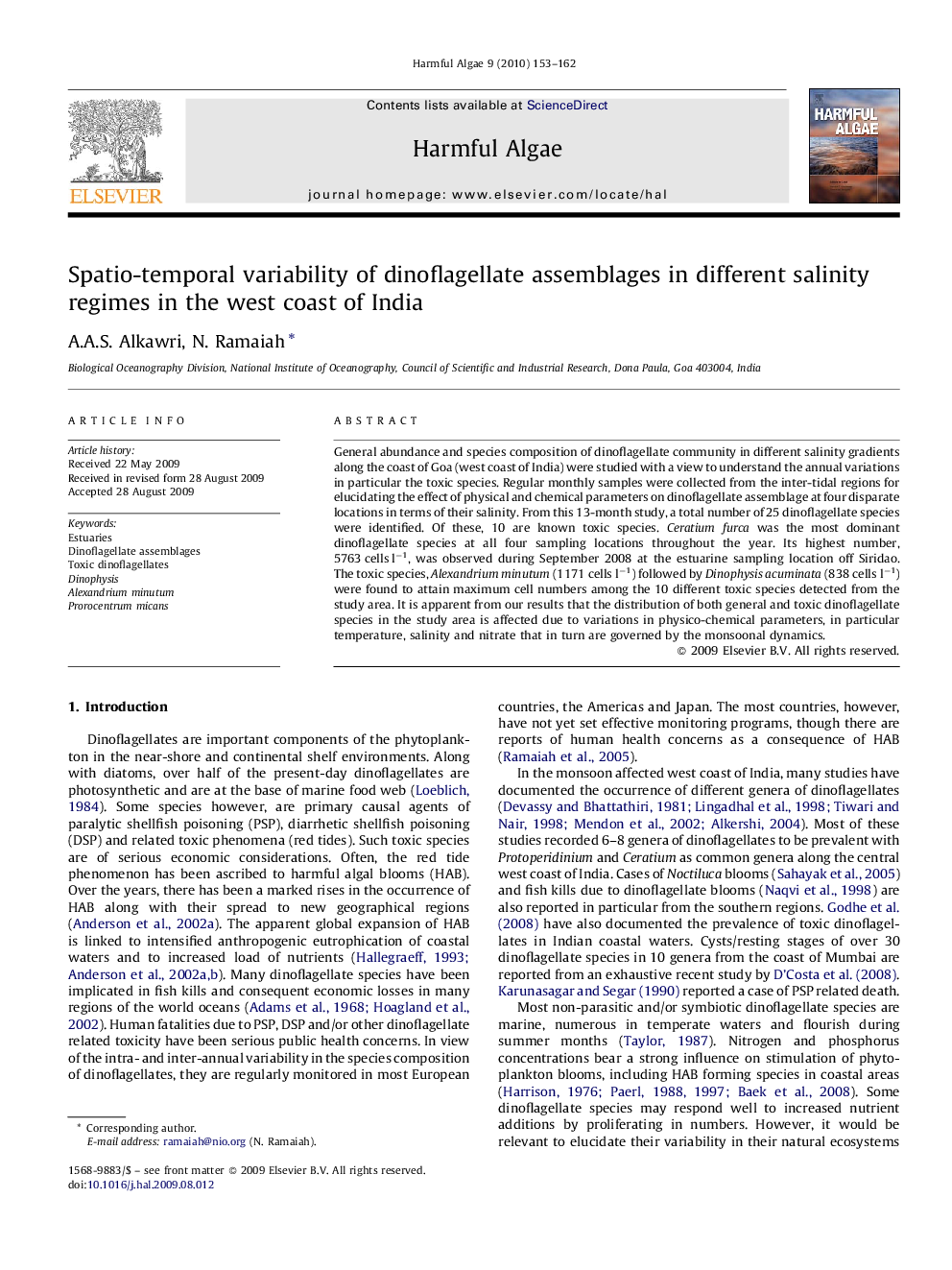| Article ID | Journal | Published Year | Pages | File Type |
|---|---|---|---|---|
| 4546011 | Harmful Algae | 2010 | 10 Pages |
General abundance and species composition of dinoflagellate community in different salinity gradients along the coast of Goa (west coast of India) were studied with a view to understand the annual variations in particular the toxic species. Regular monthly samples were collected from the inter-tidal regions for elucidating the effect of physical and chemical parameters on dinoflagellate assemblage at four disparate locations in terms of their salinity. From this 13-month study, a total number of 25 dinoflagellate species were identified. Of these, 10 are known toxic species. Ceratium furca was the most dominant dinoflagellate species at all four sampling locations throughout the year. Its highest number, 5763 cells l−1, was observed during September 2008 at the estuarine sampling location off Siridao. The toxic species, Alexandrium minutum (1171 cells l−1) followed by Dinophysis acuminata (838 cells l−1) were found to attain maximum cell numbers among the 10 different toxic species detected from the study area. It is apparent from our results that the distribution of both general and toxic dinoflagellate species in the study area is affected due to variations in physico-chemical parameters, in particular temperature, salinity and nitrate that in turn are governed by the monsoonal dynamics.
